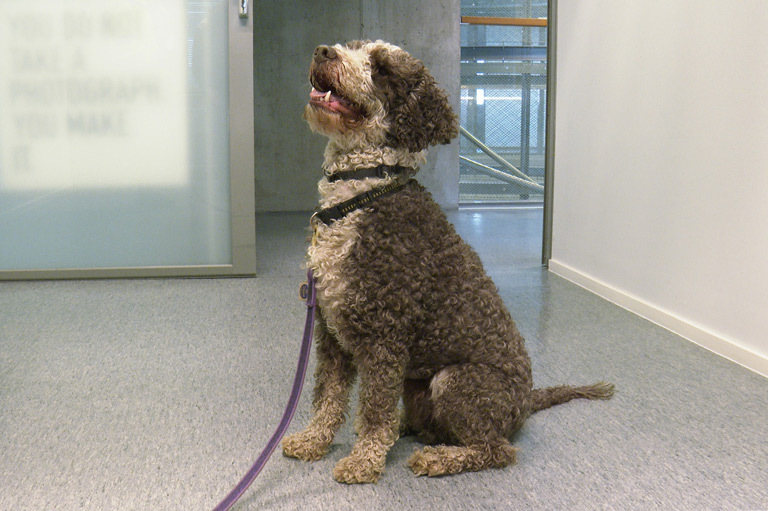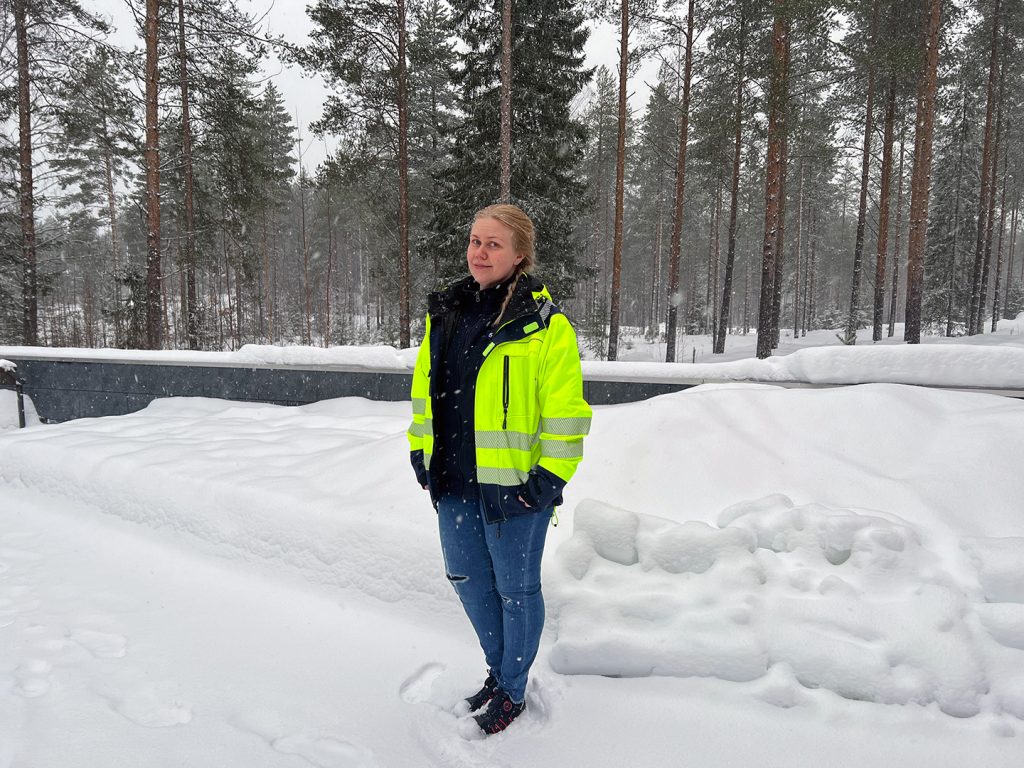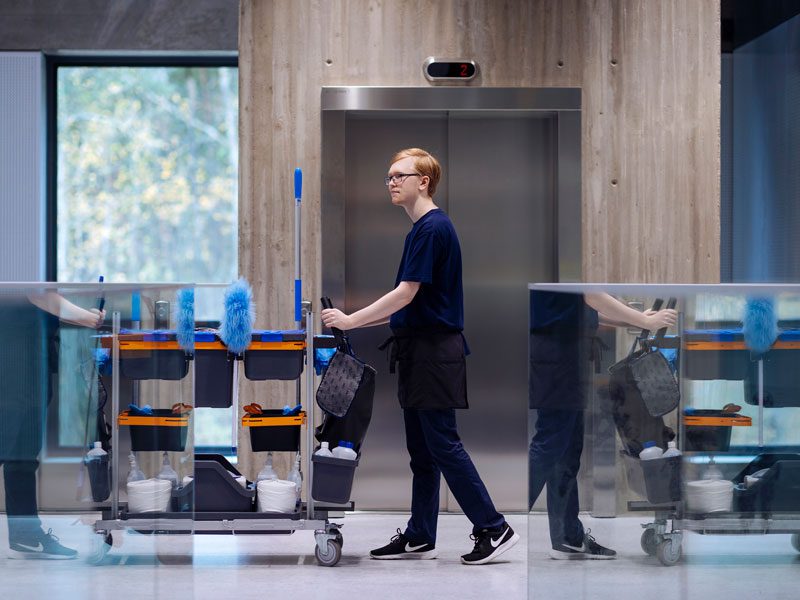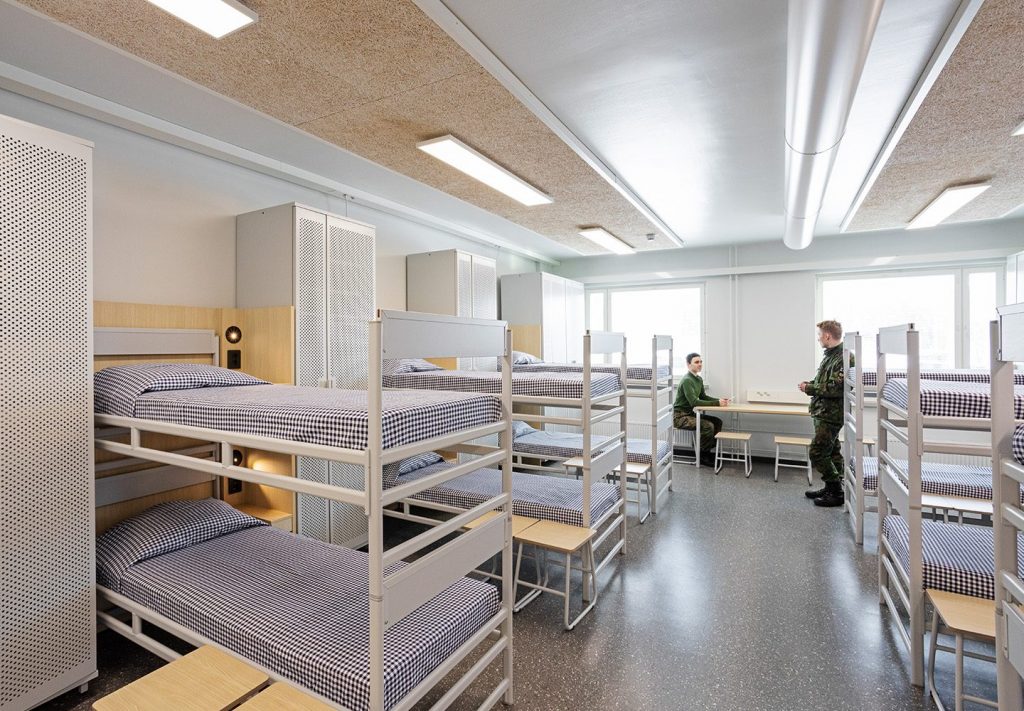K9 team of indoor air detection dogs sniffs out problems
Did you know that Senate Properties has a team of 12 dogs that inspect indoor conditions? Expert Risse Koponen and dog handler Emilia Rainetoja tell us how our indoor air detection dogs work.

Did you know that Senate Properties has a team of 12 dogs that inspect indoor conditions? Expert Risse Koponen and dog handler Emilia Rainetoja tell us how our indoor air detection dogs work.

Rysä, a Spanish Water Dog, is a member of Senate Properties’ indoor air detection dog team K9, which was set up at the beginning of 2019. The dogs have been trained to identify the smell of microbial metabolic products, and moisture damage indicator types are used in training. With their help, budding microbial damage can be detected and at best pinpointed.
The team, which comprises a total of 12 dogs and five experts or dog handlers, aims to improve Senate Properties’ ability to react to indoor air problems and to prevent them.
Headed by expert Risse Koponen, the team began indoor air detection dog activities back in 2015, with two Belgian sheep dogs, Nessi and Maikku, it had trained.
“Reaction from a dog results in further investigation and inspection by a dog is never the only method used. Dogs are very sensitive to even very small findings. Reaction does not necessarily mean damage, but we always investigate the matter.”
Project worker Emilia Rainetoja, who works as a dog handler, says that trainability is one key feature of an indoor air detection dog. Rainetoja joined the K9 team with its three Spanish Water Dogs Rysä, Loukku and Simo in January 2019.
“A dog needs to have a great desire to work and an ability to concentrate. A dog needs to enjoy doing the tasks assigned to it and must not be distracted even if there are unknown people or other commotion in the space.”
Read more: What is indoor climate? This is what it’s all about
Senate Properties uses a dog in pro-active and prevention work even where there is no suspicion of any problem in the premises. In order to prevent indoor air problems as effectively as possible, Senate Properties conducts an indoor air inspection before new users move into facilities. Inspection by a dog is like an assurance of quality. Otherwise, inspections by a dog are carried out as needed if problems of a microbial origin are suspected.
“We act in accordance with the five-day rule. When a client reports a potential indoor air problem through our e-service Senaattila, we are able to tell the customer within five days how we will start to deal with the situation,” says Risse Koponen.
Read more: Pro-action is the best way to combat indoor air problems
When an indoor air detection dog enters the premises, the handler takes it to a suitable place and sends the dog off to investigate. The search is done taking into account the dog’s habits and nature of the premises either freely or at the end of a long leash.
“The dogs love their work. They understand already when leaving home that they are off on an assignment and their enthusiasm can be heard and seen already in the car,” Emilia Rainetoja says.
Intensive sniffing is very hard work for a dog. This is why an indoor air detection dog works for around 20 minutes at a time, after which it needs an egually long break. The handler usually has at least two dogs so that the work can continue without interruption with one dog working while the other is resting.
”How long a dog is able to continue depends on the circumstances and the day. Dogs are living creatures, not robots. Like us, they, too, have their off days.”
Inspection by a dog is never the only way to measure indoor air quality and the K9 team uses a comprehensive set of measuring equipment to be able to study more than ten different variables at once.
Risse Koponen says that technical indoor air measurement takes an average of around 24 hours, during when measurements determine whether there are too many microparticles, too much carbon monoxide, carbon dioxide or moisture in the air.
“The amount of carbon dioxide tells how well the ventilation is working, whereas carbon monoxide generally comes from exhaust gases, hydrogen sulphide from sewer leaks and ammonia from moisture damage.”

Spanish Water Dog Rysä is one of 12 indoor air detection dogs employed by Senate Properties. His handler Emilia Rainetoja says that Rysä regularly has physiotherapy, osteopathy and where needed acupuncture.
Training an indoor air detection dog starts by teaching it to react to the smell of moisture damage microbes. The dogs are also taught search technology so that they can go through the premises accurately and in an orderly manner. According to Emilia Rainetoja, in training it’s important to use many different types of mould that grow on different building materials.
“There are hundreds of types of mould and when found in areas of moisture damage, they usually appear in mixed growth communities. This means a dog learns new types when it comes across them in those it already recognises. The material on which the mould grows also affects the smell picked up by the dog.”
“If we find microbial or mould growth in a building, we often take a sample of it for training purposes. Besides this, we make use of moulds cultivated in the laboratory in training.”
Read more: Dog´s life at Senate Properties
When the dogs are not at work or training, they lead a normal dog’s life. Indoor air detection dogs live with their handlers.
“The dogs are firstly family members and are very well looked after. Secondly, they’re also my best colleagues,” Emilia Rainetoja says.

"The Energy Saving Programme we launched promptly in the autumn had already delivered good results during the winter. Together with our clients, we achieved significant savings,” says Sanna Jääskeläinen, Programme…

At the initiative of Päivi Seppänen, Defence Properties Finland’s Cleaning Manager, the Kainuu Brigade reinstated cleaning lessons on the conscript training programme after a break of several years. Conscripts starting…

In this article we tell about white construction dust, grey room dust and the ways that help cleaning work and which when used do not reveal a thick cloud of…

Defence Properties Finland is investing even more heavily in ensuring good indoor air conditions for conscripts and for the personnel of the Finnish Defence Forces and their strategic partners. The…

Defence Properties Finland invests heavily in the prevention of indoor air problems: the entire Finnish Defence Forces’ building stock will be renovated during the current decade, and we have recruited…

Shared facilities and customer service for several government agencies will be built at Kauppakatu 40 in Joensuu. Indoor conditions of the premises will be improved by modernising mechanical and electrical…

Senate has measured radon levels in almost 300 state-owned buildings. Radon measurements at workplaces are part of occupational health and safety and by law employers are responsible for establishing radon…

The latest member of Senate’s indoor air detection dog team is Fiinu, a Giant Schnauzer, who looks for PAH compounds. The dog is Senate’s, and as far as is known…

Why did they build better in the old days? Should a building that has been taken over by actinobacteria be demolished? Anne Korpi, Indoor Climate Specialist at Senate Properties, answers…